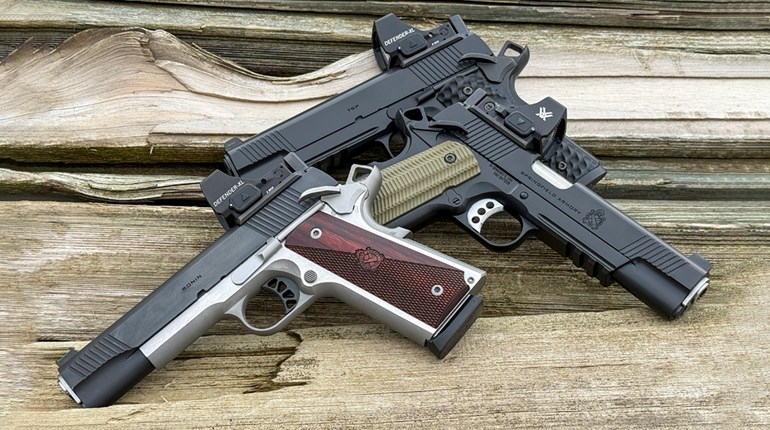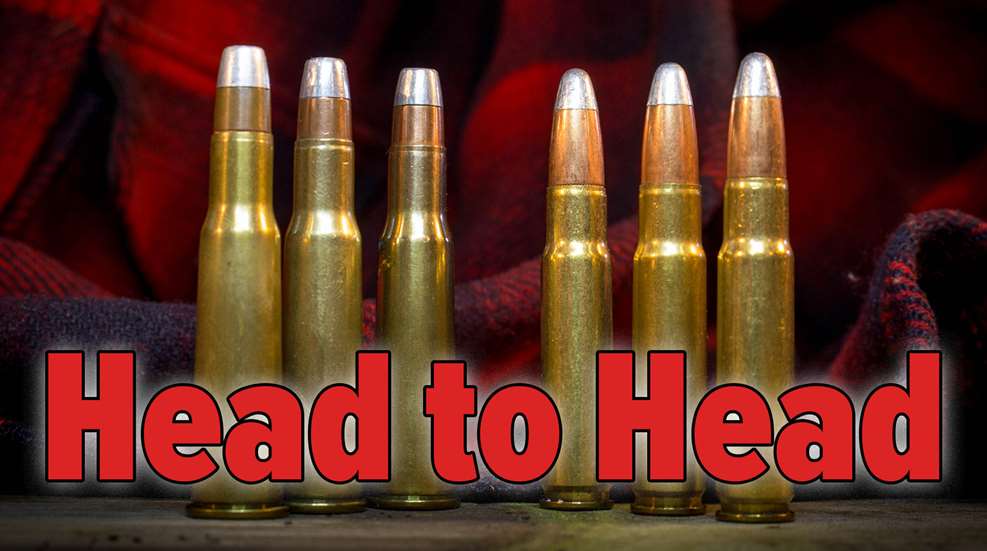
For those who enjoy hunting with Winchester lever-action rifles, we’ve got a pair of fantastic cartridges for this comparison, purposely suited to their particular rifles, with enough horsepower to fill the role of an all-around cartridge. The latter decades of the 19th century saw Oliver Winchester’s company dominating the repeating rifle market, with John Browning-designed Models 1886, 1892, 1894, and 1895. Millions of Model 1894s—later known simply as the Model 94—would see the deer woods each year, and the Model 1886, chambered in cartridges such as .33 Winchester and .45-70 Government, would become known as one of the strongest lever guns ever made.
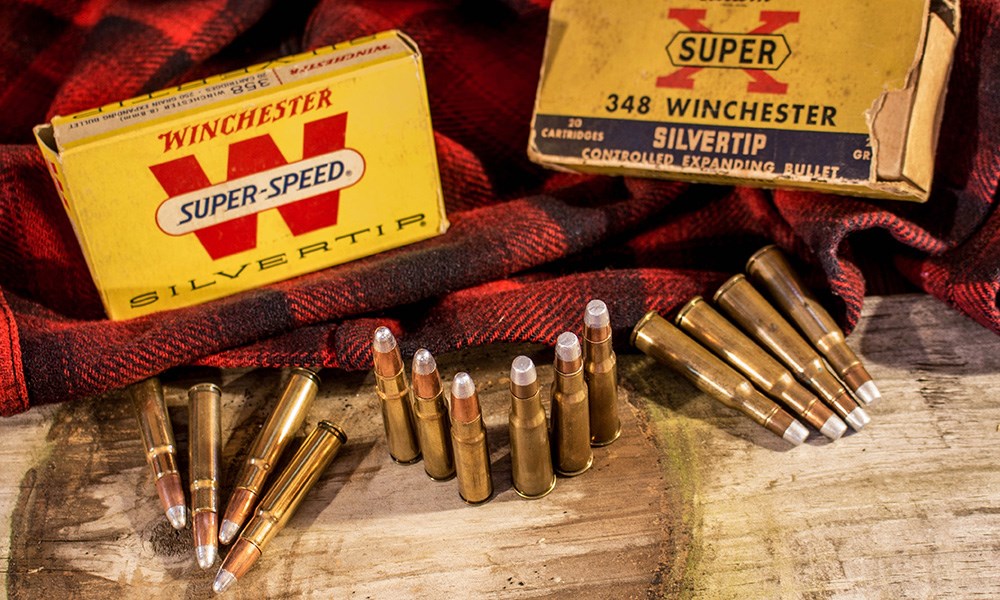
Looking to upgrade the Model 1886, due to sales dropping off, Winchester developed the other half of their premium rifle duo: the Model 71. While the ’86 came in a number of different cartridges, the Model 71 would be chambered for a single, new cartridge—the .348 Winchester—with a handful of very rare exceptions. Based on the .50-110 blackpowder cartridge, necked down to hold bullets of nominal diameter, the rimmed .348 Winchester offered ballistic flexibility, with three different bullet weights offered in the factory-loaded ammunition. 150-, 200-, and 250-grain bullets were loaded, at muzzle velocities of 2890, 2530 and 2350 fps respectively. While the 200 is what has survived, it was the 250-grain bullet that was reached for when the animals got large. The cartridge uses a 19-degree, 10-minute shoulder, culminating in a neck which gives excellent tension, though because of the tubular magazine of the Model 71 the bullets are crimped firmly in place. With a case measuring 2.255 inches and an overall length of 2.795 inches, the .348 predominately uses flat or round nosed bullets to prevent a magazine detonation. With a cartridge generating between 2,700 and 3,000 ft.-lbs. of muzzle energy, the .348 Winchester was well-suited to a top-eject lever gun, which predominately relied on iron sights.
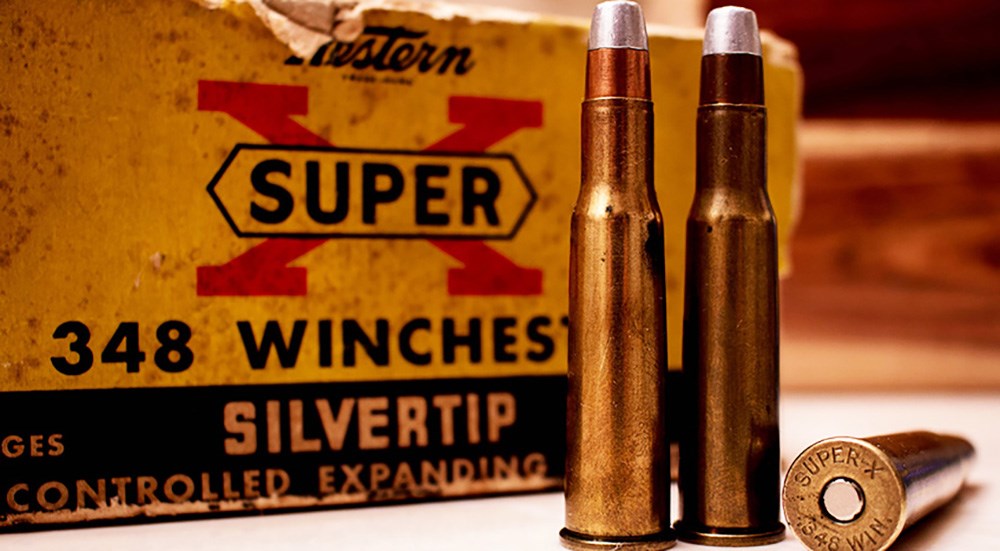
The Winchester Model 71—in the Standard and Deluxe Grades—lasted from 1936 to 1958, when it was discontinued. It was replaced by a revolutionary new design—the hammerless Winchester Model 88, with a three-lug rotating bolt lockup very similar to a bolt-action rifle. This allowed for the use of more powerful cartridges, as well as allowing for the use of a scope mounted low, over the bore thanks to the side ejection. Initially offered in the relatively new .308 Winchester, it was soon available in the new-fangled .243 Winchester, and the cartridge designed to supplant the .348 Winchester: the .358 Winchester. Simply the .308 Winchester case necked up to hold .358-inch-diameter bullets—much like the .30-06 Springfield necked up will yield the .35 Whelen—and using the same 20-degreee shoulder for headspacing, the rimless cartridge fed perfectly from the Model 88’s box magazine, as well as the in the Model 70 and Savage Model 99. Pushing a 200-grain bullet to 2475 fps, and a 250-grain bullet to just about 2300 fps, the .358 Winchester makes a great medium-range cartridge, well-suited to black bears, elk, and even moose, while handling deer and similar-sized game just fine.
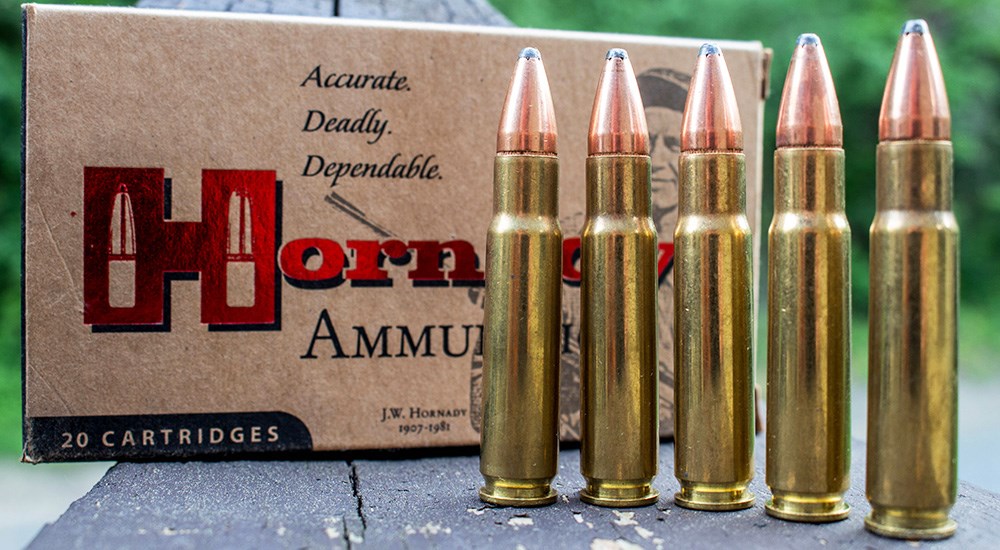
The issue with both cartridges is the lack of choices when it comes to factory-loaded ammunition. While both remain as effective as they were upon their release—and for the majority of hunting situations inside of 150 yards they work perfectly—they have been regulated to nostalgic pieces at best. But not all cartridge choices are about practicality; if so we’d all be shooting a .30-06 Springfield. Should you be fortunate enough to find a Winchester Model 71 in good shape, and I know I’d have a hard time laying off that purchase, you’ll need a supply of .348 ammunition. You could easily say the same about a Model 88 or Model 70 in .358 Winchester, though a competent reloader can, quickly and easily, convert .308 Winchester or .338 Federal brass into .358 Winchester, and there are all sorts of good .358-inch-diameter bullets available for handloading.
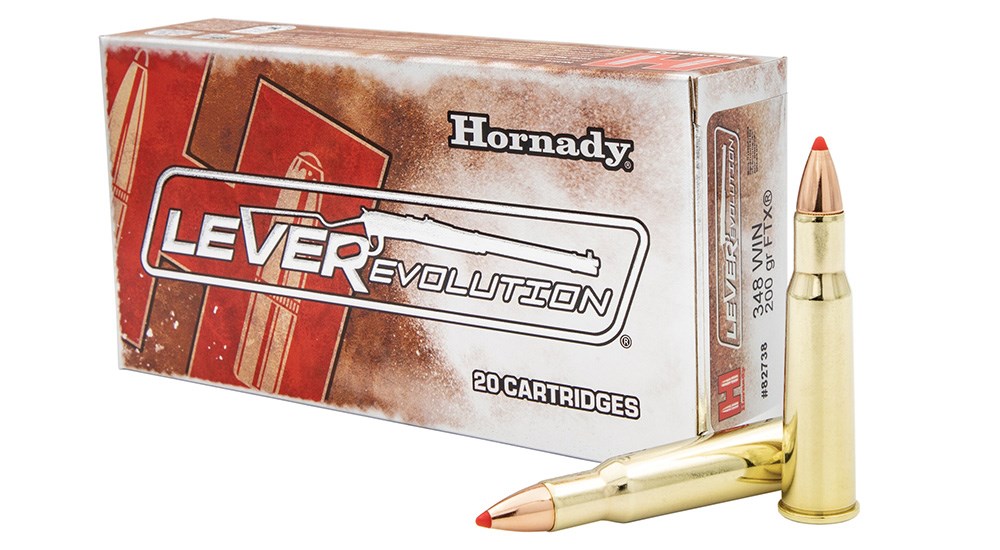
Hornady is the one major manufacturer offering ammo for both cartridges, with the 200-grain FTX loaded in the LEVERevolution line for the .348 Win., and the 200-grain InterLock in the Custom ammo line for the .358 Win. Checking the Winchester website, neither cartridge is offered any longer, though they had been just a few years ago. There is always the boutique option, with Buffalo Bore and Choice Ammunition offering ammo for both cartridges.
While we are comparing the pair of cartridges, the rifle does, in my opinion, come into play. The attractive lines and classic profile of a Winchester Model 71 lend some weight to the .348 Winchester, though a pre-’64 Winchester Model 70 Featherweight in .358 Winchester or the unique Model 88 in .358 Winchester doesn’t exactly suck. The differences are entirely subjective.
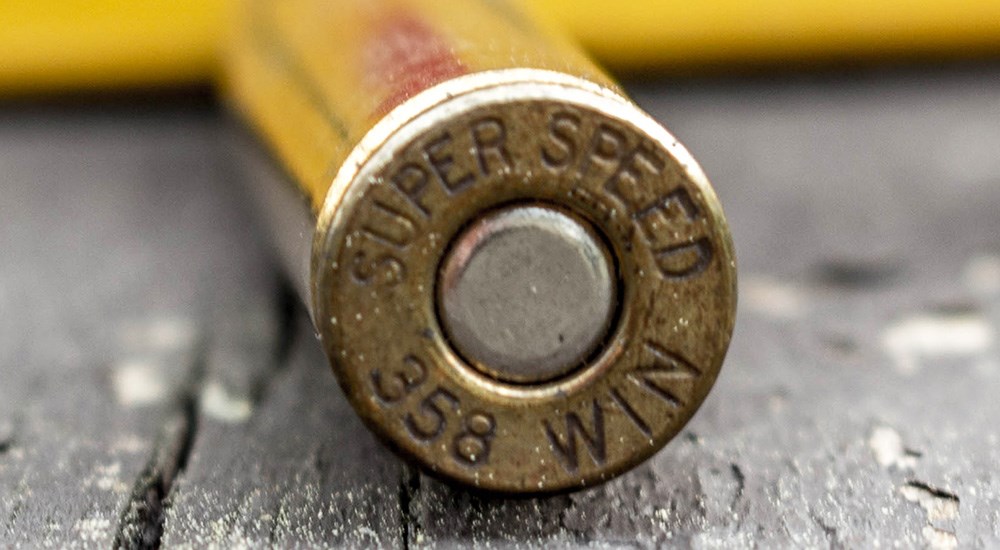
Performance-wise, I don’t think the 75 to 100 fps difference between the two cartridges would matter much to any game animal. The frontal diameter advantage—albeit slight—goes to the .358 while the sectional density advantage swings back to the .348; no obvious winner based on those criteria. What might seal the deal is the sheer number of available projectiles in .358-inch-diameter. Simply put, you can use the pistol bullets for the .38 Special and .357 Magnum for plinking and practice, while taking full advantage of the rifle projectiles for the numerous .358-inch cartridges. The .348 Winchester is the only cartridge in that bore diameter, and while that’s part of the mystique, it can also be a handicap. Yes, there are good bullets available, like the 200-grain Swift A-Frame and the Barnes Originals 250-grain lead core flat point, but the choices pale in comparison to the .35-caliber choices.
Accordingly, my practical nature gives the nod to the .358 Winchester, for the flexibility and ease of creating brass cases. That said, a well-worn Model 71 in .348 Winchester is one of those bucket-list rifles, and I’m always on the prowl for a deal, hiding in the dusty corner of a gun shop.
Looking for previous installments of our "Head to Head" series? We've got you covered.
• .35 Whelen vs. .375 H&H Magnum
• 7mm PRC vs. 7mm Remington Magnum
• 6.8 Western vs. .270 Winchester
• .218 Hornet vs. .218 Bee
• .338-06 A-Square vs. .35 Whelen
• .308 Winchester vs. .300 Winchester Magnum
• 6.5 Creedmoor vs. 6.5 PRC
• .22 LR vs. .22 WMR
• .30-06 Springfield vs. .300 Winchester Magnum
• .300 Wby. Mag. vs. 8mm Rem. Mag.
• 7mm Remington Magnum vs. 27 Nosler
• .257 Roberts vs. .25-06 Remington
• .300 H&H Magnum vs. .300 Winchester Magnum
• .308 Winchester vs. .338 Federal
• .222 Remington vs. .223 Remington
• .270 WSM vs. 7mm Rem. Mag.
• .22-250 Remington vs. .204 Ruger
• .25-06 Remington vs. 6.5 Creedmoor
• .444 Marlin vs. .45-70 Government
• 7x57mm Mauser vs. .280 Remington
• .300 Win. Mag. vs. .300 Wby. Mag.
• .375 Ruger vs. .375 H&H Magnum
• 7mm-08 Remington vs. .280 Remington
• .280 Remington vs. .280 Ackley Improved
• 7mm vs. .30 Caliber
• 6.5 Weatherby RPM vs. 6.5 PRC
• .338 Win. Mag. vs. .340 Wby. Mag.
• .300 RSAUM vs. .300 WSM
• .500 Jeffrey vs. .505 Gibbs
• 7mm RUM vs. .300 RUM
• .308 Winchester vs. 7mm-08 Remington
• 6.5 Creedmoor vs. .260 Remington
• .303 British vs. 8x57 Mauser
• .30-06 Springfield vs. All Other .30s
• .17 HMR vs. .17 WSM
• .450 Nitro Express vs. .470 Nitro Express
• 350 Legend vs. .35 Remington
• .280 Ackley Improved vs. 7mm Rem. Mag.
• .404 Jeffery vs. .416 Rigby
• .243 Winchester vs. 6mm Creedmoor
• .300 PRC vs. .300 Win. Mag.
• .30-06 Springfield vs. .270 Winchester
• 6.5 Creedmoor vs. 7mm-08 Remington
• 8x57 Mauser vs. .318 Westley Richards
• .358 Winchester vs. .350 Remington Magnum
• .22-250 Remington vs. .220 Swift
• .270 Winchester vs. .270 WSM
• .26 Nosler vs. 6.5-300 Weatherby Magnum
• .458 Win. Mag. vs. .458 Lott
• 7mm Rem. Mag. vs. .300 Win. Mag.
• .243 Winchester vs. 6mm Remington
• 7x57mm Mauser vs. 7mm-08 Remington
• .25-06 Remington vs. .257 Weatherby Magnum
• .338 Winchester vs. .375 H&H Magnum
• .30-30 Winchester vs. .35 Remington
• .257 Roberts vs. .250-3000 Savage
• .270 Winchester vs. .280 Remington
• .35 Whelen vs. 9.3x62mm Mauser
• .416 Rigby vs. .416 Remington Magnum
• .308 Winchester vs. .30-06 Springfield
• .22 Nosler vs. .224 Valkyrie
• .300 Win. Mag. vs. .300 WSM
• .223 Remington vs. .22-250 Remington














